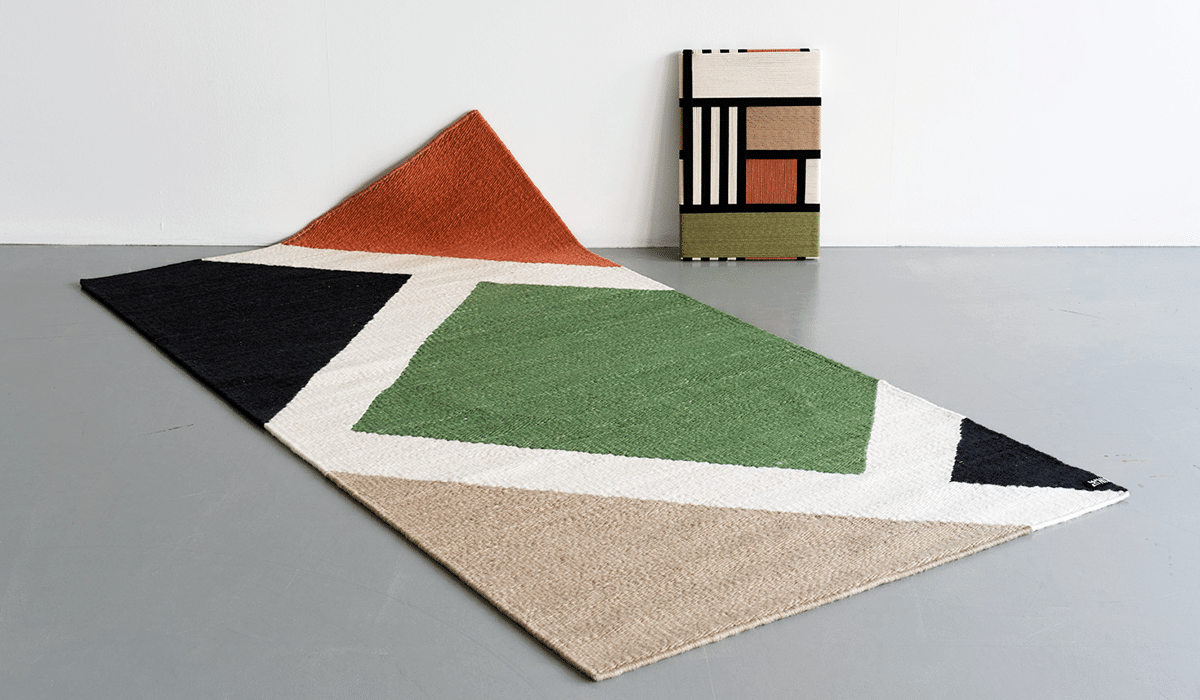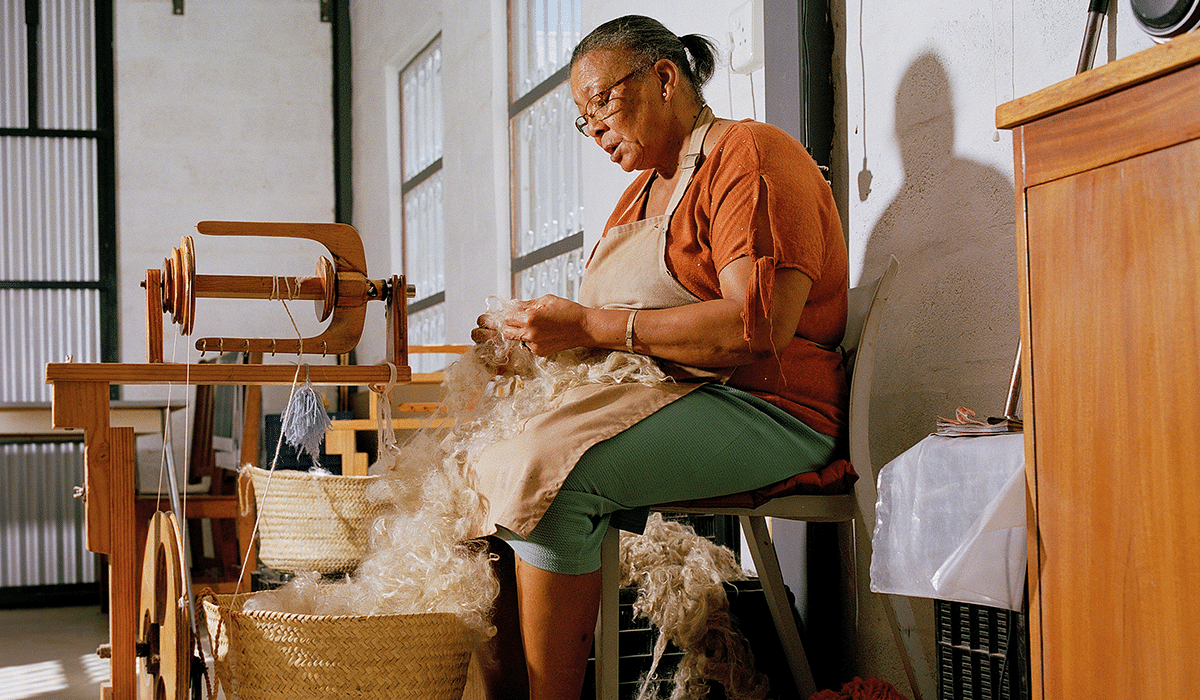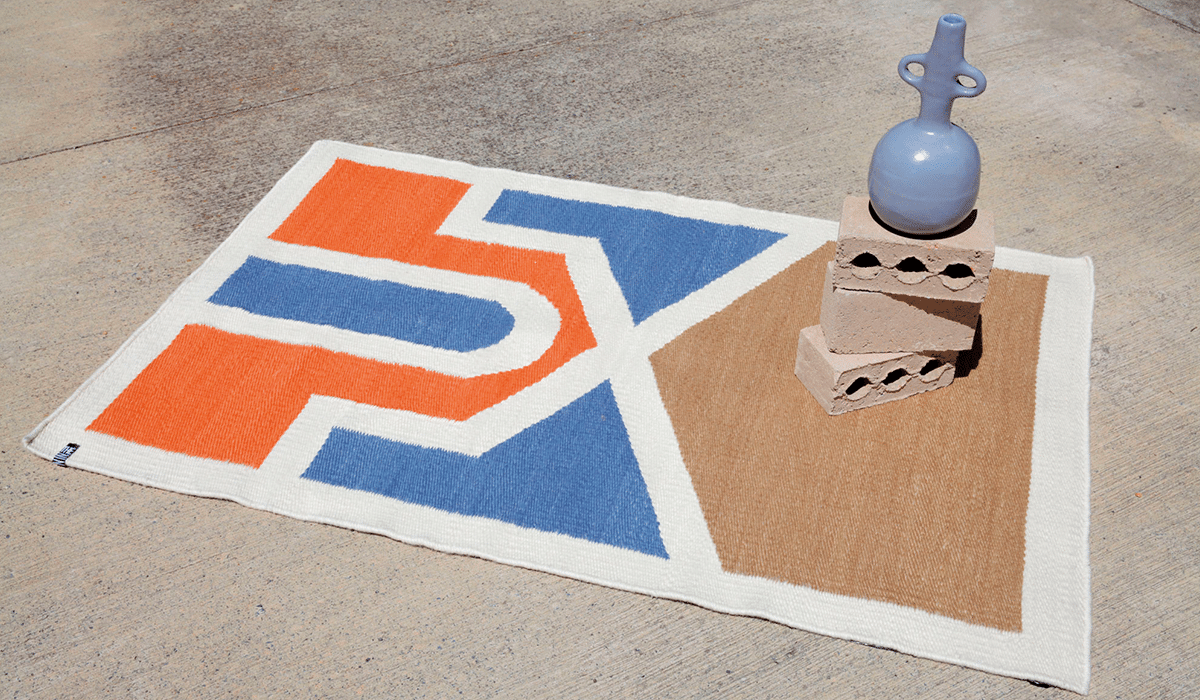Nkuli Mlangeni-Berg designs textiles that are “made-to-be-touched”. Combining her home-grown South African perspective with her more recent Swedish roots, her key to creativity remains collaboration – no matter the distance or design language.
In 2017, Nkuli Mlangeni-Berg’s Sankara rug won Design Indaba’s “Most Beautiful Object in South Africa”. The hand-woven mohair rug was one of her very first, and heralded the launch of her textile design and collaborative platform, The Ninevites. Although she now lives in Sweden, Nkuli’s textiles continue to be crafted by artisans in South Africa and Lima, Peru, using only natural fibres. She draws on her Ndebele and Zulu heritage, as well as her appreciation for minimalist and modern design, to create the bold, geometric patterns which earned her Monocle’s “Best New Talent” award in 2021.
From rugs to cushions and throws, her pieces convey that universal essence of “home” – no matter which corner of the world you may be in. We sat down with the textile designer to find out about her creative process, and what makes a house a home.

Weaving rugs is quite a niche industry. How did you get into it?
I studied at the Kaospilot school in 2016 [the award-winning Danish “school for creative leadership and meaningful entrepreneurship”] and, during my final year project, I researched textiles with a focus on fashion, production processes and techniques. I travelled to South America and met some incredible rug weavers in Peru and we ended up making prototypes.
So, it was only by chance I ended up working with textiles – it could easily have been fashion! When I came back to South Africa, I found out about our incredible mohair. I started working with local artisans and we’ve been working together ever since. I still work with Mario in Peru, so we have a very close relationship with both weaveries in South Africa and Peru.
What excites you about textiles?
The colours, textures and process, and the natural element of it. I get really excited just thinking about how pieces of fabric end up coming together. It moves me to think that so many people and hands were involved in making it come to life. I also love the dyeing process and how it creates a beautiful piece of fabric that gets translated into so many beautiful objects.
Where is The Ninevites studio and who works there?
I am based in Sweden, but 90% of the production happens in rural South Africa, and some in Lima, Peru, at the back of Mario’s home. The pieces are sold online and exhibited in galleries all over the world.

What is your design process?
Everything about The Ninevites is very collaborative, from designing the pieces to the making of it. I usually dream of an idea, do some research and then reach out to the people I want to collaborate with. And that is from the textiles we make, to the books and events that we curate.
Which rug is your favourite?
From the Sankara collection, I like the Sankara rug [above, named for Thomas Isidore Noël Sankara, a former president of Burkina Faso]: I love the simplicity, the details and how it flows.
What makes a house a home?
A home is a very comfortable and welcoming nest with a big cosy leather couch and a nice bookshelf. It should have a good collection of music records, lots of plants, great scents from Le Labo [a New York perfumery], soul food, lots of laughter and delicious chardonnay.
In your experience, how does Swedish home-making differ to South African home-making? Are there any overlaps?
South African homes are so different because we are such a diverse people. In my experience, growing up in the township, there were some similarities in most of the homes in the neighbourhood because our parents bought their furniture from the same stores. There was always the nicely polished brass pot plant, the over-the-top ceiling decorations and an obsession with a well-polished stoep.
There is not a lot of nature in the township while, in Sweden, nature is a big thing: the forest and woods are very present in their homes. There is a certain awareness of traditional design, but they usually mix up an Ikea piece with a very designer piece. But they are not as minimalistic as everyone always says or thinks. I haven’t seen much of the minimalist stuff that you see in the magazines.

What does a rug do for a room?
A rug softens the space… it’s the heart of a room and ties it all together.
WORDS: CHRISTI NORTIER I PHOTOGRAPHS: AUX-ROSE COWIE, KENT ANDREASEN, LOTTA TORNROTH





